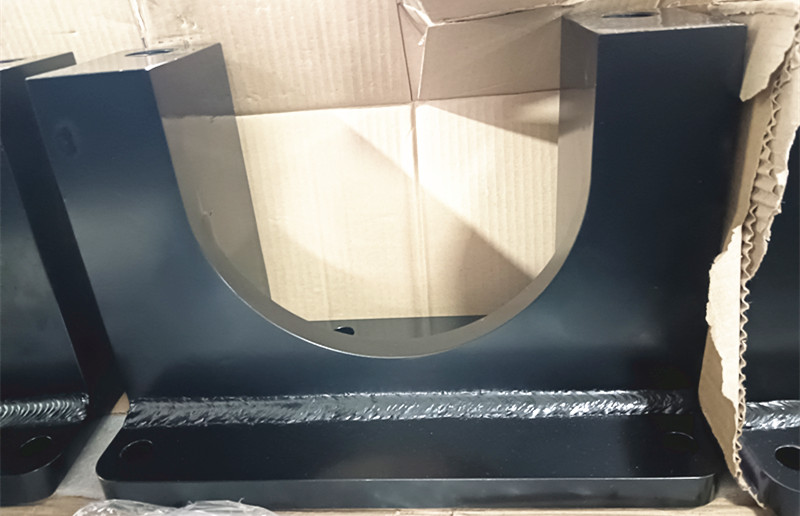Sheet metal welding involves joining thin sheets of metal using various welding techniques. The choice of welding method depends on factors such as the type of metal, the thickness of the sheet, and the desired strength of the weld. Here are some common types of sheet metal welding:
1. Tungsten Inert Gas (TIG) Welding
- Description: Also known as Gas Tungsten Arc Welding (GTAW), TIG welding uses a non-consumable tungsten electrode to produce the weld. The weld area is protected by an inert gas (usually argon or helium), which prevents oxidation.
- Advantages: High precision, clean welds, suitable for thin materials.
- Disadvantages: Slower process, requires more skill.
2. Metal Inert Gas (MIG) Welding
- Description: Also known as Gas Metal Arc Welding (GMAW), MIG welding uses a consumable wire electrode that is fed through the welding gun. An inert gas, typically argon or a mix of argon and carbon dioxide, shields the weld from contamination.
- Advantages: Faster welding, easier to learn, suitable for both thin and thicker materials.
- Disadvantages: Can produce more spatter, may require more cleanup.
3. Shielded Metal Arc Welding (SMAW)
- Description: Also known as Stick Welding, SMAW uses a consumable electrode coated in flux. As the electrode melts, the flux coating disintegrates, producing a shielding gas that protects the weld.
- Advantages: Portable, versatile, works well in outdoor conditions.
- Disadvantages: More difficult to control, more spatter, not ideal for very thin sheet metal.
4. Resistance Spot Welding
- Description: This method joins two overlapping sheets by applying pressure and passing an electrical current through the materials, creating a localized weld.
- Advantages: Fast, suitable for high-production environments, often used in automotive manufacturing.
- Disadvantages: Limited to spot welds, requires access to both sides of the sheet.
5. Plasma Arc Welding
- Description: Similar to TIG welding but uses a constricted arc and higher energy density, making it suitable for precision welding of thin materials.
- Advantages: High-quality welds, good for thin sheets, can be automated.
- Disadvantages: Expensive equipment, requires skilled operation.
6. Laser Beam Welding
- Description: Laser welding uses a concentrated laser beam to melt and fuse the metal sheets. It is a non-contact process, making it suitable for thin materials.
- Advantages: High precision, minimal distortion, fast process, can be automated.
- Disadvantages: Expensive equipment, requires precise setup.
7. Electron Beam Welding
- Description: This process uses a focused beam of electrons to join materials. It is conducted in a vacuum to prevent scattering of the electrons.
- Advantages: High precision, deep penetration, minimal distortion.
- Disadvantages: Very expensive, requires a vacuum chamber, usually limited to specialized applications.
8. Oxy-Acetylene Welding
- Description: Also known as gas welding, this method uses a flame produced by burning a mixture of oxygen and acetylene gas. It can be used for welding and cutting sheet metal.
- Advantages: Portable, versatile, useful for small repairs.
- Disadvantages: Not as precise as other methods, can cause warping in thin metals.
9. Friction Stir Welding
- Description: A solid-state joining process where a rotating tool generates frictional heat to soften and join materials without melting them.
- Advantages: No filler material needed, good for joining dissimilar metals, minimal distortion.
- Disadvantages: Limited to straight-line welds, requires specialized equipment.
10. Brazing and Soldering
- Description: These methods use a filler metal that melts at a lower temperature than the base metals. Brazing typically involves higher temperatures than soldering.
- Advantages: Good for joining thin sheets, minimal heat distortion, allows for joining different metals.
- Disadvantages: Not as strong as welding, more suitable for non-structural joints.
Each method has its own strengths and is suitable for different types of projects and materials. The choice of welding technique depends on factors like sheet thickness, material type, and required weld quality.
Click sheet metal fabrication company china or china sheet metal forming manufacturers to learn more about sheet metal fabrication services.
For all your electrical enclosures from China, contact china sheet metal fabrication factory JIATONG now.
From sheet metal fabrication companies in china, china sheet metal fabrication manufacturers, china sheet metal fabrication companies – JIATONG

Leave a Reply